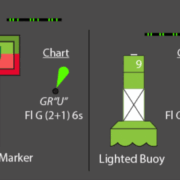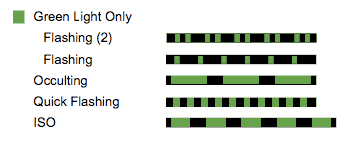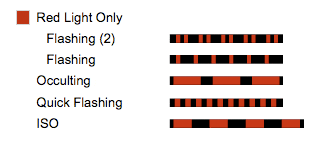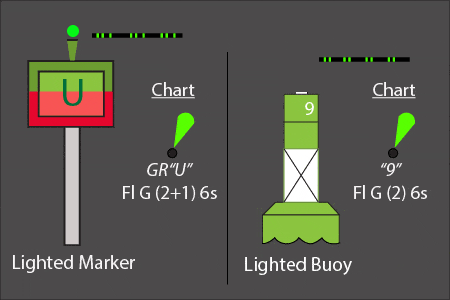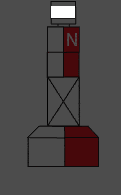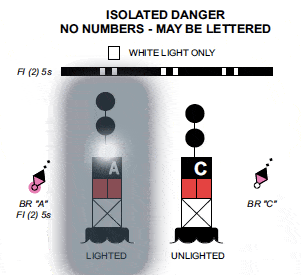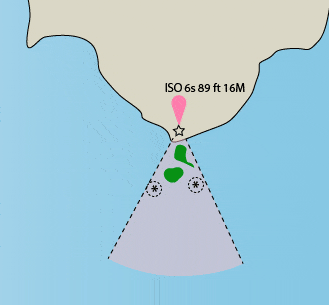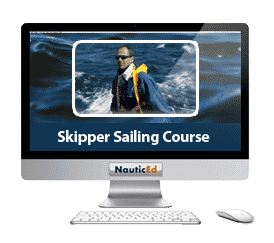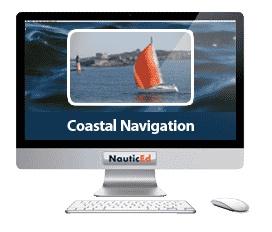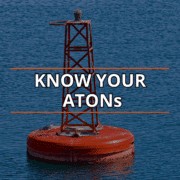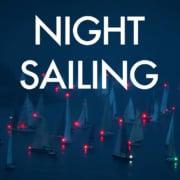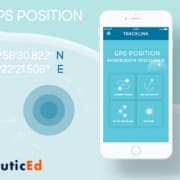Lights on Navigation Markers (ATONS)
Bookmark this page for future use and reference.
This is a partial section out of our NauticEd Skipper Course and our NauticEd Coastal Navigation Course which discusses lights on ATONs. If you find this useful then perhaps you might consider taking either of the courses. Coastal Navigation is only $39 and covers most everything you need to know when navigating a yacht. When you pass the course it automatically adds to your NauticEd Sailing Resume.
If you find this post useful then please like it on Facebook. It really helps us grow – thanks for that.
ATONs are Aids to Navigation. The term is primarily used in the United States and Canada. Most of the rest of the world refer to them as Navigation Marks.
Lights are installed on some ATONs. The lights are usually alternating on and off on some consistent interval to distinguish one ATON from another. The series of “ons” and “offs” are listed on the charts. This helps identify exactly which ATON you are observing. The time between each series is called a “period”.
Lighted ATONs are grouped into Flashing, Quick, Occulting and Isophase.
- Flashing: A light in which the total duration of light in each period is clearly shorter than the total duration of darkness – and in which the flashes of light are all equal in duration.
- Example: a quick flash on then a longer period off
- Example: the flashes might be grouped meaning that the ATON flashes quickly a number of times followed by a longer period of dark then repeating.
- Quick Light: A light turning on more than 60 (but less than 80 flashes) per minute.
- Occulting: Showing longer periods of light than darkness (opposite of flashing)
- Isophase: showing equal periods of light and darkness – remember that “iso” means same.
- A Long Flash: (L Fl.) A light which exhibits a long flash of 2 seconds followed by a period of longer darkness.
- Morse Code: (Mo. (letter)) A Morse coded letter
Colors of lights are listed with the ATON. They are red (R), green (G), yellow (Y), and white (W). Blue is reserved for law enforcement. Or if the color is not listed then it is white.
Examples of the various types are shown below:
There can also be a composite group flashing light. In the example below the green light flashes twice then one – then repeats after some time.
You can identify the lights on the charts from the information next to the light. In the example below, the Bifurcated Lateral Maker “U” flashes composite green twice then once every 6 seconds – Fl G (2+1) 6s, while the Green Lateral Can number “9” flashes green twice every 6 seconds – Fl G (2) 6s.
At night, you’ll be able to pick out the lights against their backdrop of city lights because of their alternating nature. In the example below you can see Fl G (2+1) 6s and Fl R (4) 6s. Notice however, that you have to concentrate on one at a time, so that the other does not distract you.
Here is a slightly visually annoying summary.
| Fl R | Fl R (2) 5s | QF | Occ Fl R | Iso Fl R | Composite Fl (2+1) 6s |
Caution Lights
In most countries, including the USA, the white quick flashing light is used to mark Cautionary ATONS
Safe Water Marks
In many countries, including the USA, the Safe Water mark is used and is a white flashing Morse code “A”. One short followed by one long and then repeating at least 8 times per minute. Just remember A – ok.
But also, a safe water mark can be exhibited by other white lights as shown specifically on the chart.
A long 2 second flash over a 10 second period (L Fl. 10s) is also reserved for a safe water mark.
Special Purpose Marks
If a Special Purpose Buoy is lighted it displays a yellow light with fixed or slow flashing characteristics.
Isolated Danger Marks
If lighted, a white light shall be used and the chart will announce the flashing sequence. The image below shows Fl (2) 5s but this is just an example. Any time you see a white flashing light you should be on guard.
Sector Lights
Sector lights are sectors of color that are placed on lantern covers of certain lighthouses to indicate danger bearings. On a chart, the sector bearings are true bearings according to the chart and must be converted from magnetic bearing if using a compass. A red sector indicates a vessel is potentially in danger of running aground. Note however, that red can be seen beyond the danger zone as well.
This is also seen here below in a real case of a Nautical Chart #12354 Long Island Sound Eastern Port. Can you spot the Red Sector light?
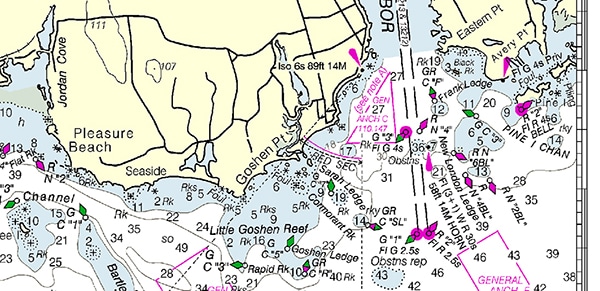
Spot the Red Sector Light
Cardinal Mark Lights
Cardinal Marks if lighted use white quick flash lights. They are easily remembered from thinking of a clock dial.
- North – Continuous quick flash
- East – 3 quick flashes (3 o’clock)
- South – 6 quick flashes followed by a long flash (6 o’clock)
- West – 9 quick flashes (9 o’clock)
Light Lists
Publications that list all the lights usually exist for each country. In the United States the Coast Guard publishes the Light List. For your country, or the country you are visiting, just search on “coast guard light list (country)” or you might replace coast guard with navigation or atons.
Below is an excerpt. Each ATON is listed by number (from the index at the back of the light list), it’s name and any distinguishing location, its lat and long position, its characteristic, height (if it is a light house), the range that the light can be seen from, the type of structure and any remarks about the light.
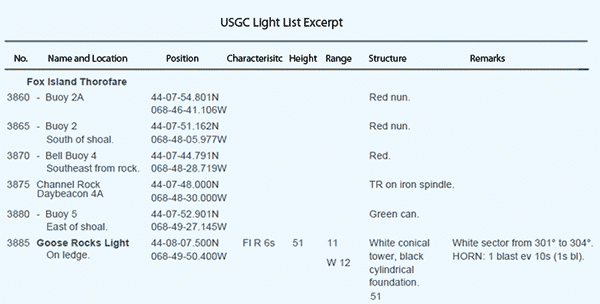
Light List Excerpt
Putting It All Together
The graphic animation below shows what a harbor entrance may look like at night.
And the corresponding chart symbols might look like this below
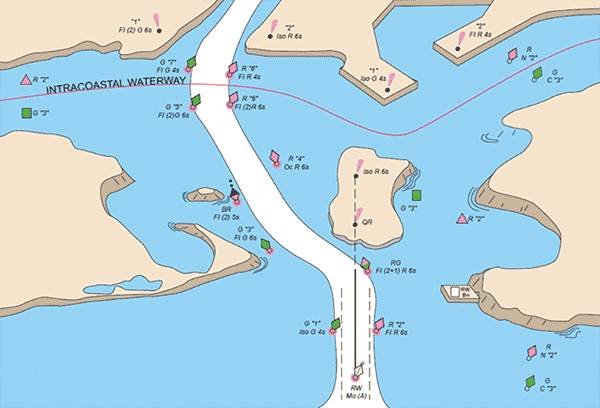
Lights on a Chart
Take the NauticEd Skipper Course and our NauticEd Coastal Navigation Course. These courses are packed with information you should know as a responsible sailor.


